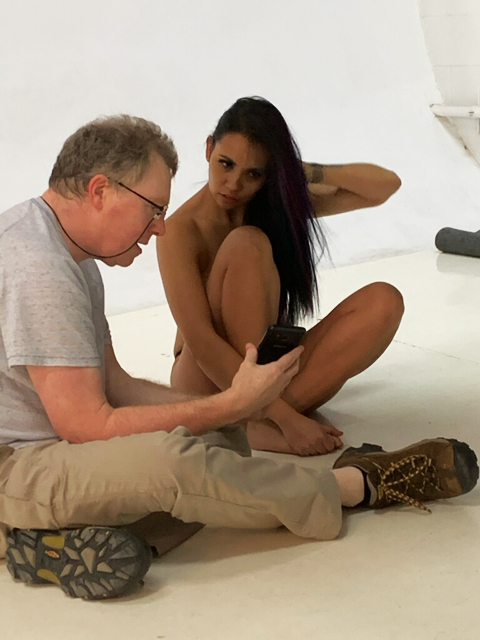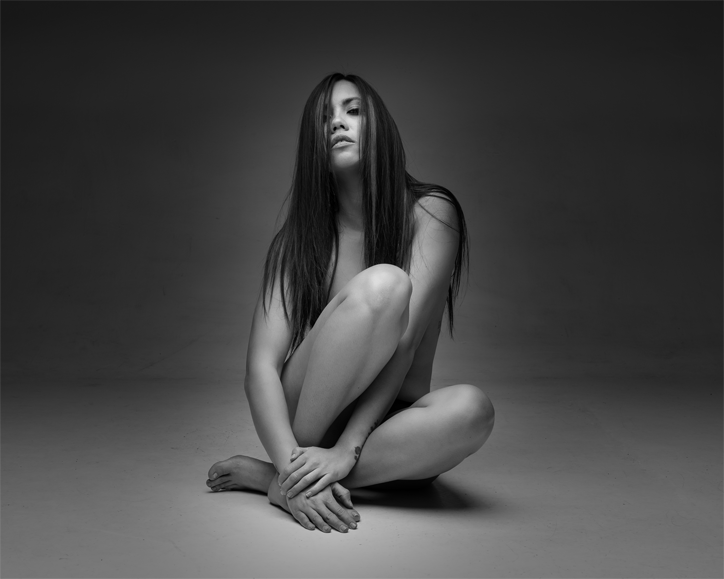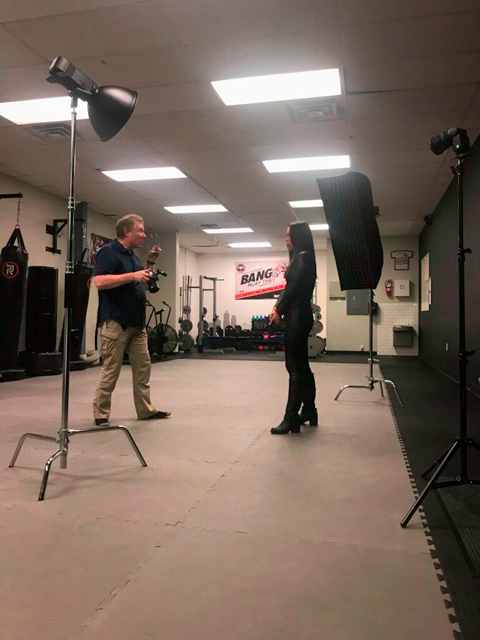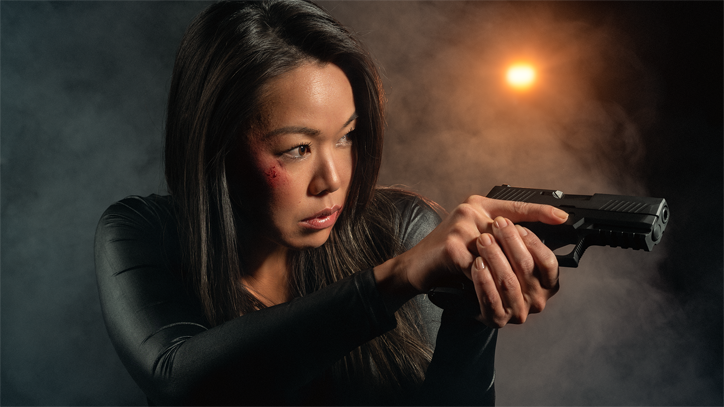Over the past few years of doing the photography thing I’ve really gravitated towards doing a lot of work with models because I’ve found that I love photographing people. From my admittedly limited experience I’ve come up with some tips for both models and photographers that I believe to be useful for me. The key thing here is that this is purely from my personal perspective, and it’s geared toward collaborative shoots for portfolio or personal project endeavors.
Please keep in mind that following is my opinion and how I do things. If it’s not for you, rock on.
MODELS
Don’t practice posing in front of a mirror
Really, don’t do that. It gives you a wildly inaccurate representation because what you’re seeing in the mirror is, well, a mirror image of you. It will never look like what you see in an image of yourself. If you feel you must practice in front of a mirror, instead practice emoting. Sounds weird, but posing is easy. Emoting is hard.
Pose less, move more
Some of the best, most experienced models earn their bread and butter by posing, holding it, camera clicks, they then switch up the pose, hold it, wait for the camera to click … And, frankly, many if not most photographers perpetuate this. It’s not necessarily a bad thing; in fact in many circumstances the pose hold approach may be preferable; lookbooks, catalogs, headshots, etc. Also, I’ve done shoots in which precise and complex lighting was necessary. In those circumstance, yes, pose hold click is great. If you want to get good shots easily, a good model doing the pose and hold approach is great.
With a good model, this approach will guarantee really nice photos if the photographer does their job. But then look at the awesome photos you got, then look at the photos from previous shoots with other photographers. Other than setting, lighting, and wardrobe, they’re likely to be pretty much the same.
And that’s not necessarily a bad thing.
But if you want to get photos that are different and stand out, drift, flow, and move and make the photographer work for the shots by capturing the moments. Instead of looking at it as posing for a photo, approach it as if moving for a film or video. Learn to drift with not only your body and limbs, but with your eyes, face, and emotions too. I’m not talking about flailing around wildly or even mildly. I’m talking subtle drifting with posture, emotion, and eyes. You can tell you’re on the right track when reviewing the images by quickly going through them. It will look like a stop motion film clip.
I’ve worked with some pretty experienced models with whom I’ve spent considerable time getting them to pose less and drift more. It’s uncomfortable for them at first, but once they take a look at the results on the computer the clouds part quickly.
Yes, you get a lot of weird, goofy looking shots, but you also get some amazing and unique shots that you likely would not get otherwise. And with practice, the keepers to duds ratio improves greatly.
Models are horrible at determining what is or is not a good photo
Trust me. It’s true. Models are the worst judges of photos. The reason, I feel, is that they focus on what they believe to be their personal physical disadvantages; things that the average person that looks at them simply doesn’t notice. I think a lot of this comes from models judging themselves based on what they see in the mirror (see above) or in selfies.
The best judge of a photo is, like it or not, the photographer. Sure, if you’re paying good money to a photographer then, yes, pick what you want, but remember, the photographer is way more likely to know which photos are the best.
Don’t pose with your face
What I mean by this is, well, don’t pose with your face. Don’t contort your face to express an emotion (with rare exception). It’s not uncommon for some to twist their face into an emotion. Instead of doing that, try to begin with the emotion, really embrace it, and let the eyes follow as a natural extension. If it begins in the mind, the eyes will follow, and then the face will do what it’s supposed to do. Good actors know this.
No means no
Ideally before committing to a session, both the photographer and the model will have viewed each other’s portfolios and discussed at least generally what each one is after. That being said, it’s not unusual for either one of them during a shoot to suggest something. It’s perfectly okay for that to happen. But if a photographer suggests or asks you to do something that you’re not comfortable with it’s perfectly okay to say, “No, I wouldn’t feel comfortable with that.” And once you’ve expressed that, there should be zero discussion of it after.
And it works both ways. I’ve had models want to do some shots that I particularly wasn’t entirely on board with.
No means no.
Bring someone with you
If you’re doing a shoot with a photographer you’ve never worked with before, absolutely feel free to bring someone with you. There’s no reason that a photographer should have a problem with it. If you want to bring someone with you even if you’ve worked with the photographer many times before, do it.
I’m not talking bringing an entourage with you. No, definitely don’t do that. But, if you like, bring a friend, boyfriend/girlfriend, husband/wife, whatever. If you wouldn’t feel comfortable otherwise and the photographer balks, tell them to pound sand.
Sorry, photographers, but I feel strongly about this.
PHOTOGRAPHERS
Don’t take artistic advice from other photographers
Other photographers are the worst people from which to receive artistic feedback from. Do yourself a favor and do not seek artistic advice from other photographers. Sure, other photographers are great to learn technical aspects from; settings, lenses, getting your head around the use of flash, etc. But throwing your photos out there and asking for the opinions of other photographers is a nightmare scenario.
The reason I say this is because of the plethora of online places such as the forums at places like DPReview. If you go to, say, their Portrait and People Photography forum you’ll witness some of the most absurd nonsense you’re likely to see; much of it unsolicited in response to photos that people put up. I think much of the nonsense is because of the nature of an online world and how it has magnified human nature. Human nature, whether we like it or not, is to hear someone spout something with authority and then accept it without thinking about it. Examples of this are: don’t crop off the tops of heads. Don’t crop off the tips of fingers or feet. Don’t crop at the joints of limbs. Any hint of perspective distortion is bad. Catchlights other than round ones are bad. 2 to 1 lighting ratios are optimal, too shallow DOF, on and on. In other words if you push the boundaries at all and go against the “portraiture orthodoxy” they’ll pound you down until you conform if you let them.
I’ve seen new people start throwing up photos on that forum, make adjustments per the orthodoxy, and a year later they’re throwing up technically nice photos that are exact replicas of your average yearbook photo or something that was made in one of those family photo shops you used to see at the shopping mall. If that’s what you want, good. But if you want something that has just a slightly unique flavor to it, good luck. You’re just the next vanilla flavor sitting next the other vanilla flavors.
Do observe the work of other photographers
Within reason. The world is full of some truly great photographers. But don’t view the work of other photographers with the intent to necessarily copy what they’re doing. Instead, try to figure out what it is about their work or a particular photo that you like. Why do you like it? What is it about it that got your attention? Use the work of others as an inspiration.
I find that as time passes, I do this less and less. But I always enjoy looking at the work of others. There are a lot of talented people out there.
Learn from other photographers
There are a lot of great photographers out there. There’s something to be learned from almost any photographer. I love watching others work, how they deal with lighting, or how they work with models, or how they post process; whatever it is. If I’m ever invited to come and participate in any way by another photographer, I try to take them up on it because I almost always learn something.
Your way isn’t the only way.
Start creating a mood/vibe board
Remember, I’m directing this mainly towards people photographers. Start building a mood/vibe board of images that present various moods/vibes that you admire. You can do this with either an online tool like Pinterest or DropBox, etc., or locally on your own hard drive.
Personally, I prefer to use an online tool. The reason for this is because if I’m setting up a shoot or working with someone in creating a project, I like to send them a link to my extensive mood/vibe board so that they can pick out shots that represent a mood/vibe that appeals to them. It’s not to copy something, but to use it as inspiration. It also helps you to better understand where the model is coming from. It can save so much time.
I’m constantly adding to mine. It’s a never ending process. It includes photos from various photographers, including me.
Learn to use artificial lighting
Even if you’re a “natural light” photographer. The reason is that light is light; whether it’s natural or artificial. If you learn artificial lighting, it will translate into better understanding and use of natural light.
Practice more with natural light
This is directed at photographers who mainly use artificial light for the same reasons. Getting better at natural light will make you a better artificial light photographer.
Shoot tethered whenever possible
I know it may not be possible all of the time, especially when shooting on location or outdoors. But whenever possible, I highly encourage photographers to shoot tethered to a computer and encourage models to view what’s coming out. If you can’t shoot tethered, at least show them the back of the camera often.
Don’t be afraid to show unedited photos
This is related to shoot tethered whenever possible. I have personally spoken with photographers who will not let people see unedited photos. Because of this they will either not shoot tethered or, if they do, they won’t let people see the images on the computer. Don’t be that person. The reasoning for some is that they don’t want others to see images until they’re finished. They insist on only showing their “vision.”
Ugh.
If you can’t get it mostly there in camera, then you’re doing something wrong. Even if your “final vision” is a complex composite, show what’s happening to the model while taking photos. I know a photographer who specializes in complex composites. The guy is amazing. I’ve watched him work with models and he has no problem with showing them the back of the camera during the shoot. Even though what they’re seeing is not even close to what the final result will be, they still look great because he knows what he’s doing.
To take it a step further, after a shoot I encourage models to sit down with the laptop full of all of the unedited images we just shot and go through them and pick out ones they like the best.
If you’re not comfortable with showing people your unedited photos, work on your skills until you are.
Encourage models to bring someone with them
This is a big one for me. I always invite models to bring someone with them; especially if it’s a first shoot. Surprisingly, few do. But I always make sure that they know they are welcomed to. I know quite a few photographers who discourage it for various reasons.
I don’t get it.
For me, I want the models to be as comfortable as possible. If they’re comfortable, you’ll get better photos.
Plus it’s the respectful thing to do. Trust me, you’ll get better pics, too.
I’ve had husbands/boyfriends or friends at implied shoots that come along and I’ve never had a problem with it. In fact it can be kind of funny when they pull out their phone and take a behind the scenes photo of me working with their half naked wife or girlfriend.

I normally wouldn’t get as close as I am in the photo above, but we’re good friends and it’s still strictly business. When her boyfriend took the photo he chuckled and said something like, “Dude, it’s like you guys are in the office, or something.”
Here’s one of the final shots from the session:

No matter what kind of shoot it is, it’s okay for them to have someone with them.

One of the final shots from the session above.

Be nice, be considerate
Modeling is difficult. Don’t forget that you’re dealing with a human. Get to know them. Talk with them. Make them feel comfortable. Understand that it’s a mutual collaboration. Make it worth their while to be doing this. Go above and beyond. Be accommodating.
This will mean talking while shooting. You can’t take on a truly mutually collaborative spirit without talking with the model and communicating with them while shooting. Always encourage. Never degrade. Make the shoot all about the model. I really mean that.
Also, the world is full of awesome people. This is a chance to meet and get to know some. I’ve never had a shoot after which I didn’t feel good about meeting and getting to know that person a little bit.
Don’t be creepy
I debated on whether to have this at the beginning or at the end because it’s so important.
I mean it.
Don’t be creepy. Don’t make crude or rude remarks. Don’t reference body parts in a sexual manner. Don’t leer, Don’t do anything that can be construed in any way other than strictly professional.
Some kinds of shoots really require good judgement and a lot of respect. Turn away if need be. Ask if they’re ready for you to turn around. Have a robe at hand and when not taking photos, offer it. If there’s a “slip” politely let them know.
The old adage of, “never touch the model” is a good one. If I’m doing an implied style of shoot, I try to keep my distance as much as possible. There are a couple of models that I’ve worked with numerous times and we’ve become good friends. We’ve developed good relationships. They are okay with me moving a couple of strands of hair, or something like that. But it’s the exception. And even then I always ask.
Reputation is everything. Don’t do ANYTHING to jeopardize it.
That can go for assistants, too.
In fact I’d love to be able to find a good female assistant. But that’s a whole other topic.
There you go. That’s it. Again, this is just my opinion and what has worked well for me.